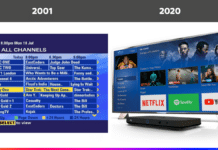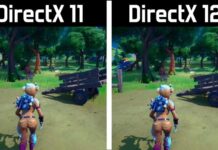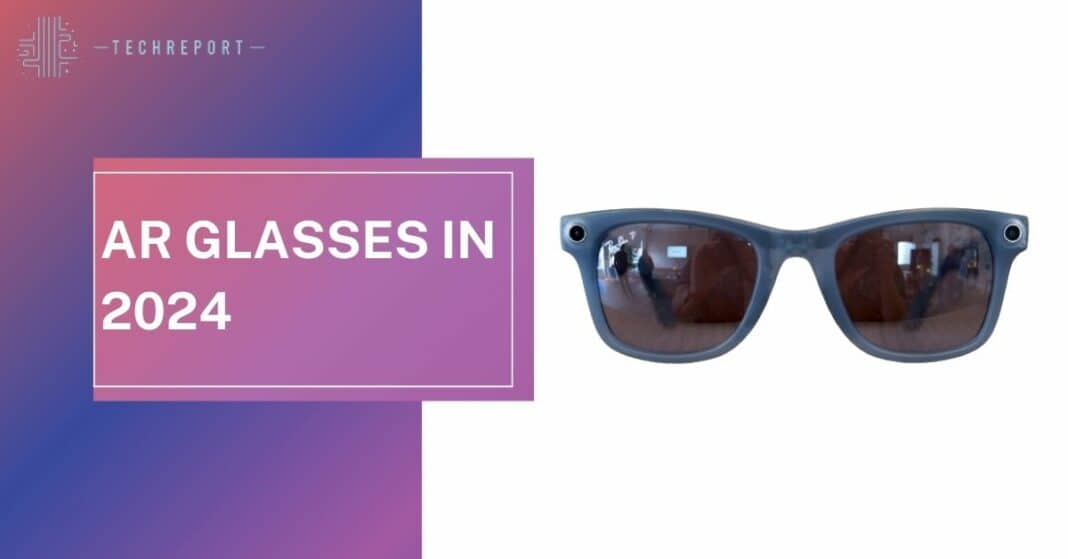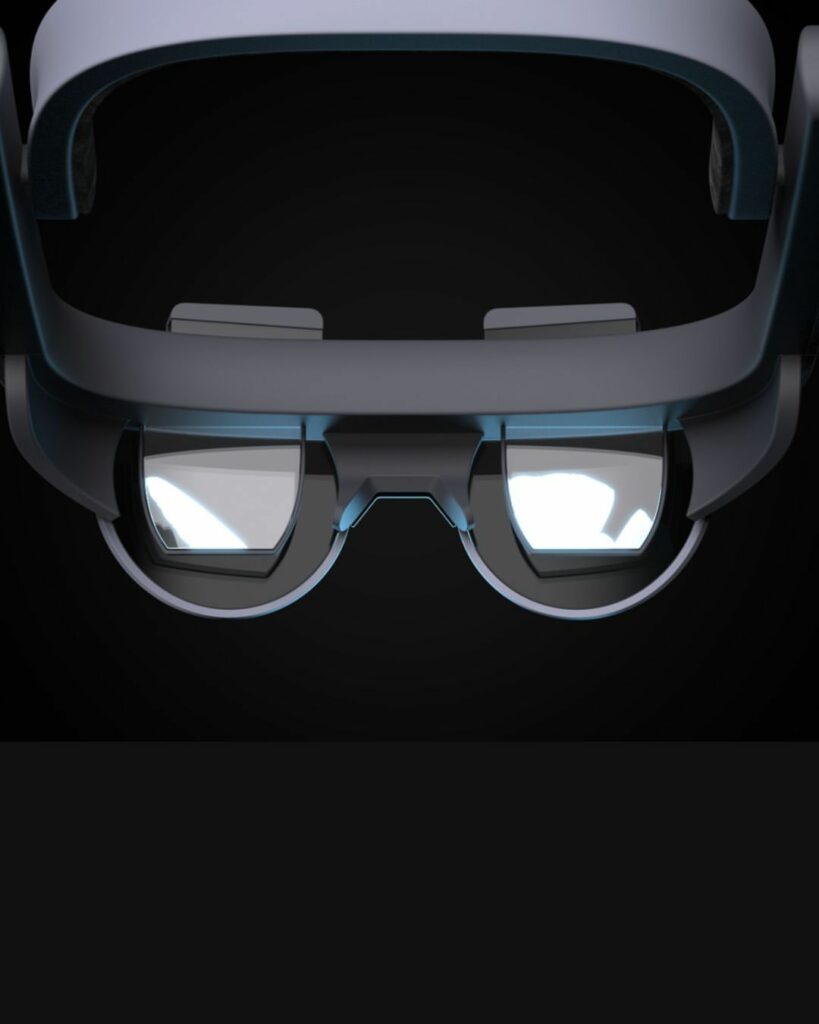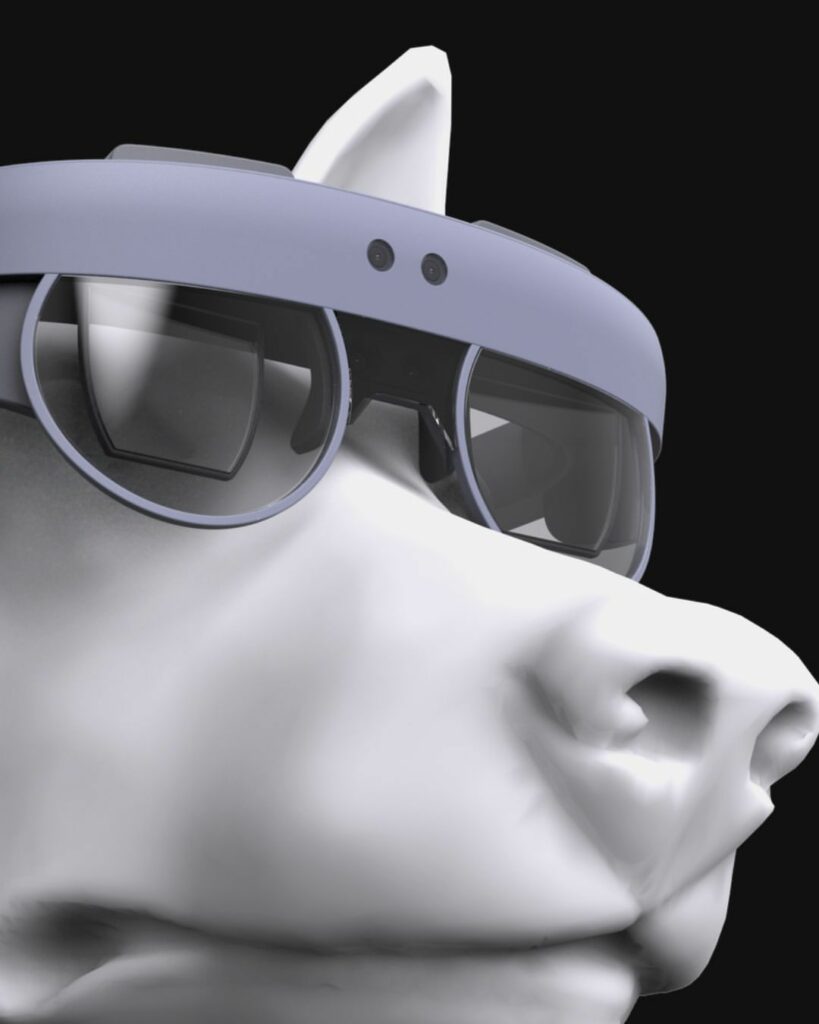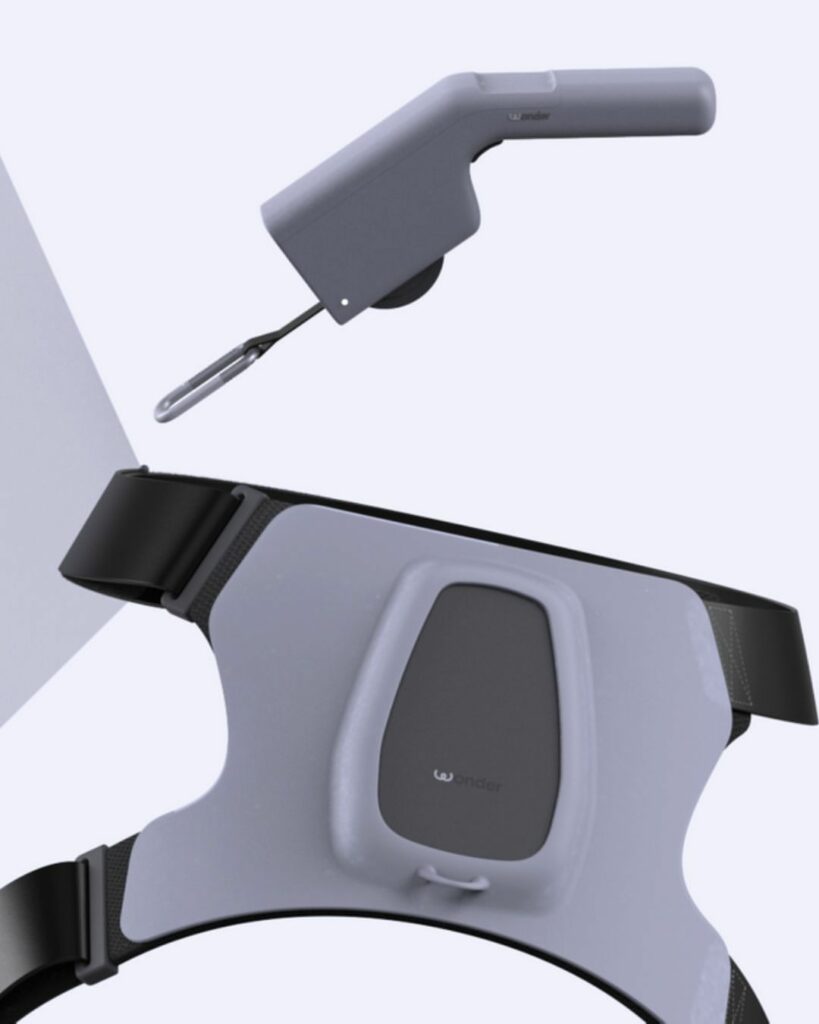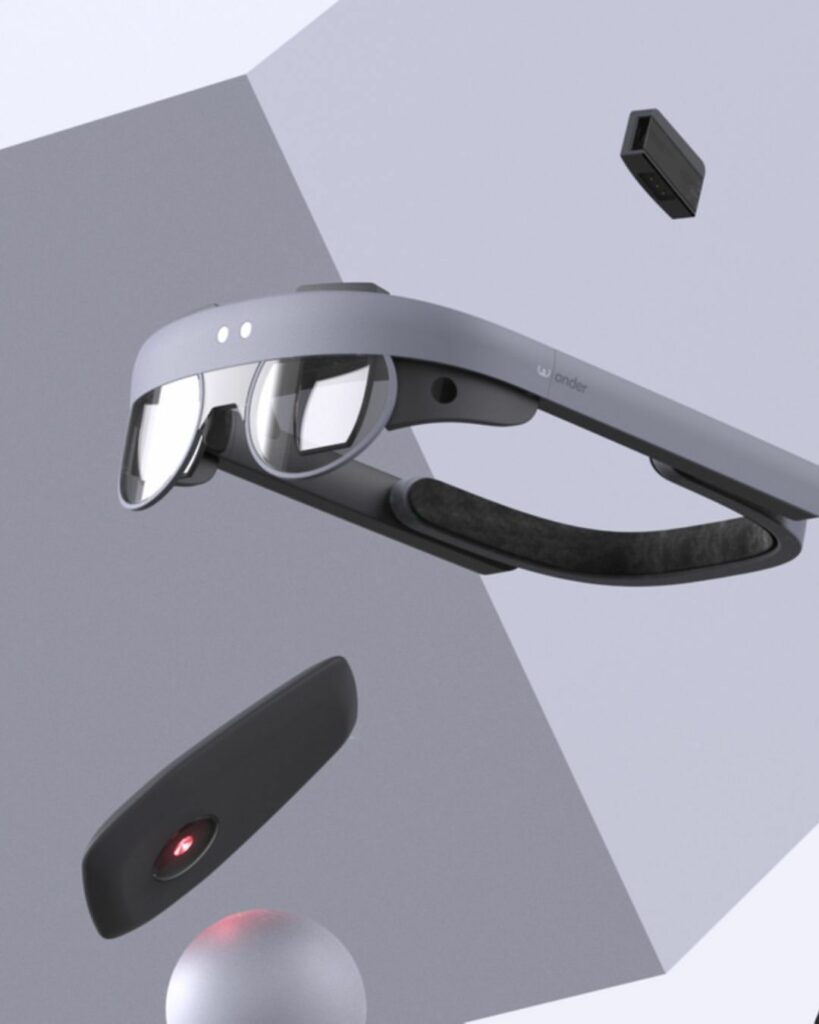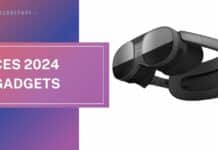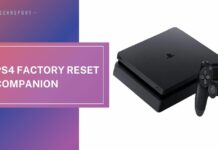Unlocking the Future: AR Glasses in 2024
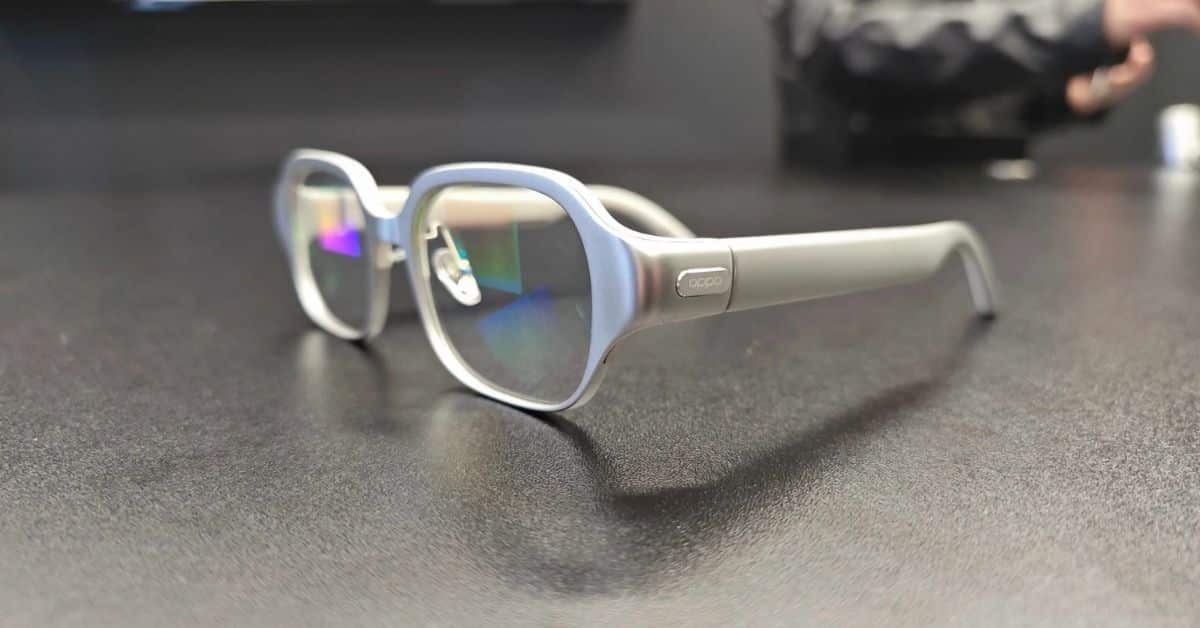
The year 2024 has kicked off with tremendous anticipation in the tech world, especially at the Consumer Electronics Show (CES) 2024. Among the myriad of innovations, one particular phenomenon is stealing the spotlight – the evolving landscape of Augmented Reality (AR) glasses.
As we navigate through the technological marvels presented at CES 2024, the emergence of AR glasses takes center stage. Companies are unveiling their latest breakthroughs, with Meta’s Ray-Bans leading the charge, promising a silent revolution in how we perceive and interact with augmented reality.
To appreciate the significance of AR glasses, it’s crucial to understand the current state of Virtual Reality (VR) and Augmented Reality (AR) technologies. Traditionally running on parallel paths, these technologies have shaped experiences ranging from external displays for gaming to immersive virtual spaces like those offered by Meta’s Quest 3 and Apple’s Vision Pro.
However, the challenge lies in merging these paths. While some opt for glasses to alleviate the burden of bulky headsets, questions persist about the capabilities and user preferences in this dynamic landscape. The quest for a compact yet powerful AR device sets the stage for the intersection of these technological advancements, pointing toward a promising future for AR glasses in 2024.
Also Read: Decoding Meta 3
AR Glasses Revolution at CES 2024
Xreal Air 2 Spectacles and Real-time Experience
One standout at CES 2024 is the Xreal Air 2 Spectacles, providing users with a transformative real-time augmented reality experience. These spectacles mark a significant leap in wearable technology, offering more than just an external display. Users can immerse themselves in a seamless blend of the digital and physical worlds, all within the compact design of AR glasses.
Intersection of VR and AR Technologies
The AR glasses revolution signifies a convergence between Virtual Reality (VR) and Augmented Reality (AR) technologies. While VR headsets like Meta’s Quest 3 aim for immersive virtual spaces, AR glasses, such as Xreal Air 2, bridge the gap between the real and virtual worlds. This intersection marks a pivotal moment in the evolution of XR (Extended Reality) technology, promising users a versatile and dynamic experience.
The Two Parallel Paths: Glasses vs. Headsets
In the tech realm, two parallel paths have defined the user experience – glasses and headsets. Glasses, exemplified by the Xreal Air 2, prioritize simplicity, portability, and real-world integration. On the other hand, headsets like Meta’s Quest 3 provide a more immersive but bulkier experience. The CES 2024 showcases not just products but a choice between these paths, leaving users to decide the direction they want to take in the world of AR technology.
The Future of XR Technology
Xreal’s Vision for “Wearable Computing”
Looking ahead, Xreal envisions a future marked by “wearable computing” — a concept poised to redefine how we engage with technology. This strategic shift implies a move beyond traditional devices, hinting at a revolutionary step where computing seamlessly integrates into everyday wearables, notably AR glasses.
Challenges and Questions for Future Development
While the vision is compelling, the path to wearable computing is not without its challenges. Questions loom over user preferences: Are they content with multiple devices, or do they prefer an all-in-one solution? The debate revolves around wirelessly connecting to smartphones for rendering images versus relying on the cloud for comprehensive VR scenarios. These challenges underscore the need for innovative solutions in battery technology, connectivity, and user preferences. Xreal’s roadmap signals a commitment to addressing these challenges, experimenting with features like bone conduction audio and advanced display technologies, all in pursuit of making wearable computing a reality. The journey towards this future promises a paradigm shift, potentially consolidating various functionalities into a pair of AR glasses sooner than anticipated.
Also Read: The Future of VR Headsets
Predictions for CES 2024
Anticipate groundbreaking developments in display technology at CES 2024. Xreal has already hinted at a concept that eliminates traditional glass prisms. This innovative approach projects images across the lens from the side, potentially paving the way for AR glasses that mirror the size of conventional eyewear. As the industry strives to overcome the main obstacle hindering the compactness of AR glasses, a prototype unveiling during CES 2024 could be imminent.
A bold vision on the horizon is the pursuit of device-free computing. While ambitious, the prospect of integrating Airplay directly into AR glasses offers an intriguing solution. This move could alleviate the need for separate add-ons like Xreal’s Beam, streamlining the user experience. The feasibility of this goal will undoubtedly depend on advancements in battery technology and the overall power efficiency of AR glasses, creating an exciting topic of discussion and exploration during CES 2024.
One of the most significant predictions revolves around the integration of hand-tracking capabilities directly within AR glasses. Recognizing the need for compact yet powerful computation within the glasses, the industry is poised to pack in cameras at the bottom of the rims. This ambitious feature aims to enhance user interaction and navigation, making the user experience more intuitive and immersive. As we delve into CES 2024, hand-tracking within AR glasses is expected to be a focal point, bringing us closer to a future where the digital world responds seamlessly to our gestures.
Competitive Landscape in the AR Space
Within the competitive landscape of Augmented Reality (AR), Xreal stands out as a dominant force, currently commanding an impressive 51% market share. The success of Xreal’s Air 2 at CES 2024 underscores its commitment to revolutionizing AR experiences. The sleek design and real-time capabilities have positioned Xreal as a frontrunner, setting a high standard for competitors to match.
As the AR space becomes fiercely competitive, various companies are adopting distinct approaches to cater to diverse user preferences. Xreal’s Air 2 focuses on delivering a gaming-centric experience, emphasizing simplicity and spatial computing. In contrast, competitors like Viture prioritize a fully fleshed-out sensory experience, incorporating accessories for an immersive feel. TCL’s Rayneo glasses, on the other hand, concentrate on achieving the best possible picture in a minimal form factor, appealing to users seeking a sleek and unobtrusive design. This diversity in approaches signals an exciting divergence in the AR market, with each company vying for a unique position while learning valuable lessons from the evolution of VR headsets.
Also Read: Apple’s Sideloading
In Crux
In conclusion, CES 2024 has become the platform for the silent revolution of Augmented Reality (AR) glasses. With Xreal’s Air 2 leading the charge and dominating the market, these sleek and innovative wearables are making a mark without the need for grandeur headsets. The unobtrusive design of AR glasses signifies a shift towards technology seamlessly blending into our daily lives, promising a revolution that is silent but profoundly impactful.
As we reflect on the revelations at CES 2024, the anticipation for significant developments in Extended Reality (XR) technology grows. The boundaries between the real and virtual worlds are blurring, driven by advancements in display technology, the pursuit of device-free computing, and the integration of hand-tracking within AR glasses. This journey, fueled by the competitive spirit among industry players, propels us toward a future where XR glasses might become as ubiquitous as smartphones. The stage is set, and the curtain has only just risen on the unfolding saga of AR glasses in 2024, leaving us eager for what’s to come.
How much did you like our detailed AR Glasses in 2024: The Silent Revolution? Also, please share these Blogs with your friends on social media.
Related Blogs
- Is iPhone 14 Worth the Hype
- Unblock Banned Apps
- Best Cheap VPN Services
- Antenna vs Cable TV
- TiVo or DVR
FAQs about AR Glasses in 2024
How does Xreal envision the future with "wearable computing"?
Xreal envisions a future where computing seamlessly integrates into everyday wearables, a concept termed "wearable computing." This strategic shift, as outlined in their product roadmap, suggests a departure from traditional devices. The goal is to offer users a new computing paradigm within the compact design of AR glasses, setting the stage for a revolutionary step in technology engagement.
What challenges does the industry face in achieving device-free computing?
The pursuit of device-free computing raises questions about user preferences and the feasibility of an all-in-one solution. The challenge lies in deciding between wirelessly connecting to smartphones for rendering images or relying on the cloud for comprehensive VR scenarios. Addressing these challenges requires innovations in battery technology, connectivity, and understanding evolving user preferences, pushing the industry toward groundbreaking solutions.
What are the anticipated advancements in display technology at CES 2024?
Anticipated at CES 2024 are groundbreaking developments in display technology, particularly Xreal's concept eliminating traditional glass prisms. This innovative approach projects images across the lens from the side, potentially revolutionizing the size and form factor of AR glasses. The industry's quest to overcome this obstacle may lead to prototype unveilings during CES 2024, showcasing advancements in display technology.
How does the competitive landscape look in the AR space, and what approaches are companies taking?
In the competitive AR landscape, Xreal currently dominates with an impressive 51% market share. Competitors, including Viture and TCL, adopt diverse approaches. Xreal's Air 2 focuses on gaming simplicity, Viture prioritizes a fully fleshed-out sensory experience, and TCL's Rayneo glasses aim for the best possible picture in a minimal form factor. This diversity reflects a dynamic AR market, with each company striving for a unique position and contributing to the evolution of AR technology.



